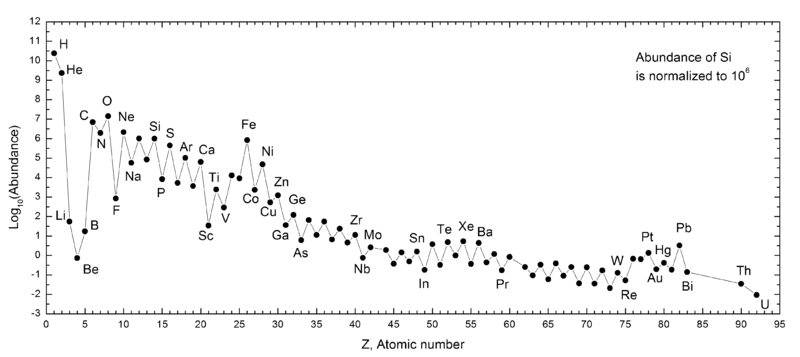Iron peak
The iron peak is a local maximum in the vicinity of Fe (V, Cr, Mn, Fe, Co and Ni) on the graph of the abundances of chemical elements, as seen below.
For elements before iron, nuclear fusion releases energy. For elements heavier than iron, nuclear fusion consumes energy, but nuclear fission releases it. Chemical elements up to the iron peak are produced in ordinary stellar nucleosynthesis. Heavier elements are produced only during supernova nucleosynthesis. This is why we have more iron peak elements than in its neighbourhood.

Binding energy
The graph below shows the nuclear binding energy per nucleon of various elements. Increasing values of binding energy can be thought as the energy released when a collection of nuclei is rearranged into another collection for which the sum of nuclear binding energies is higher.
As can be seen, light elements such as hydrogen release large amounts of energy (a big increase in binding energy) when combined to form heavier nuclei—the process of fusion. Conversely, heavy elements such as uranium release energy when converted to lighter nuclei—processes of alpha decay and nuclear fission. 56
28Ni is the most thermodynamically favorable in the cores of high-mass stars (see also Silicon burning process). Although some nuclides with 58 and 62 nucleons have even higher (per nucleon) binding energy, their synthesis cannot be achieved in large quantities because the required amount of neutrons is typically not available in the stellar nuclear material.